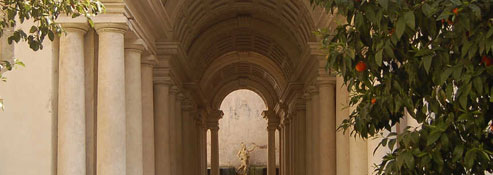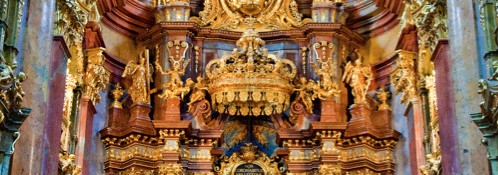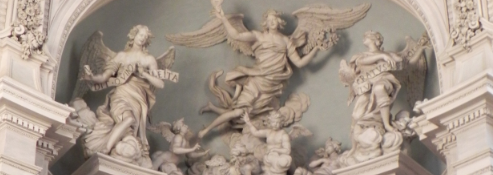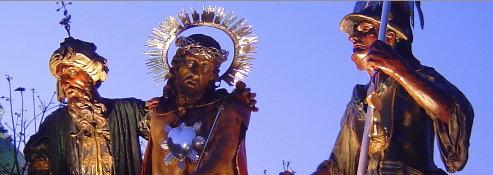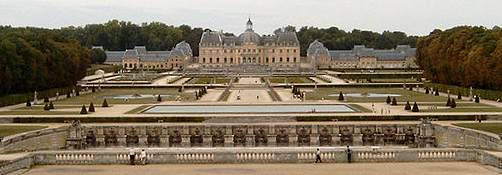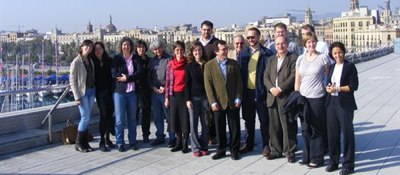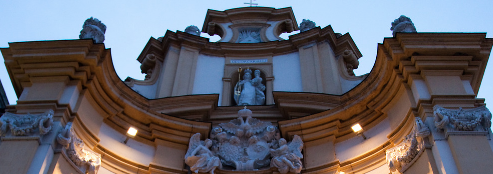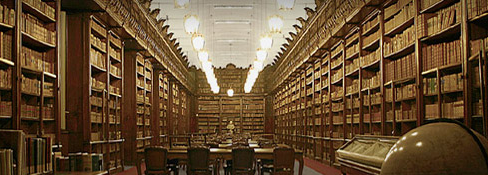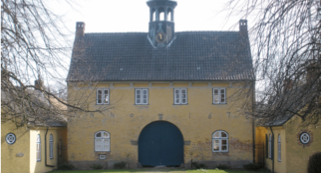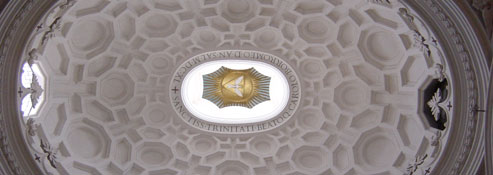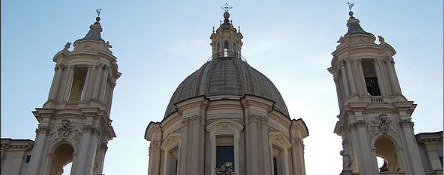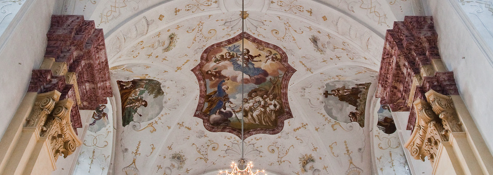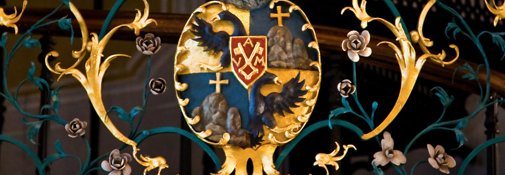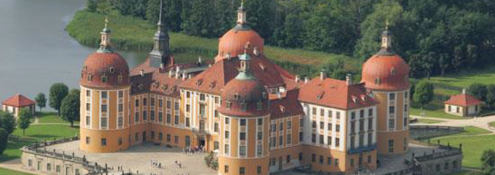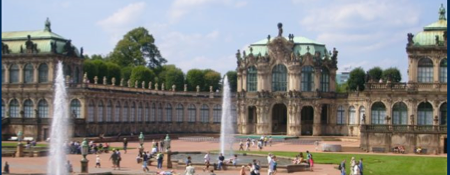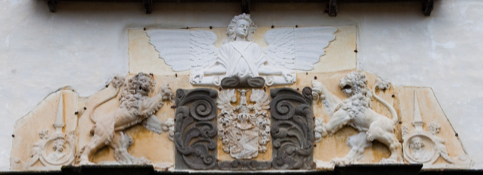This paper aims at showing how a research on laboring-class poets in early modern France, considered as a source for labor history, has benefited from a reflection on the category of Baroque which is of course very unfamiliar to labor historians. Apart from Robert Burns, many eighteenth-century British laboring-class poets have been identified - enough to fill three volumes of a recent anthology [1] -, even if most famous names are those of nineteenth-century poets: one has to mention first John Clare, though it is also possible to evoke John Jones, or the "old servant" published in 1831 by Robert Southey. [2] Southey wrote for this book a well-known introductory essay "on the lives and works of our uneducated poets", where Johns is associated with the shoemaker James Woodhouse (1735-1820), the thresher-poet Stephen Duck (c. 1705-1756) or the oldest of all, John Taylor (1578-1653), the Thames waterman poet. These popular poets are more or less present in literary memory. [3] In France, laboring-class poetry is a post-revolutionary phenomenon. It is well know that George Sand, Michelet, Victor Hugo or Lamartine were in relation with working-class poets, and wrote on what their appearing meant - Michelet, prominently, in Le Peuple. [4] I am working on a carpenter-poet of the seventeenth century, and on craftsmen who made oral or even written poetry and sometimes published it, which is different: indeed, a carpenter-poet is different from a carpenter who writes poetry.
The purpose of this research is to use literature, considered as a historical phenomenon, as a tool to read or reread and reinterpret sources traditionally or less traditionally read to study the intellectual life of European working-classes and more generally the formation of a working-class in European societies. For some of these sources took also part in the emergence of literature itself. [5]
What did it mean, from a social and political point of view, to become a carpenter poet in Richelieu's France - one might say in Baroque France? What did it mean that a man, Adam Billaut, who initially was a carpenter, a quite wealthy and well-introduced carpenter who wrote poetry like and among many other prominent inhabitants of Nevers, his not so small city in Burgundy, more precisely in Nivernais, a territory held by the Duke of Mantua, came to publish in Paris a book where he is insistently depicted as a poor and uneducated (to use Southey's words) craftsman suddenly possessed by poetical spirit? Billaut did own a carpenter workshop when his first published poems - different from his first written poems - appeared in 1633 and 1634 as part of the encomiastic peritext of two medical books about the properties of the Pougues thermal spring, near Nevers.

He was a carpenter then, but nothing distinguished him from the other poets who were engaged in the laudatio of Etienne Flamant and Augustin Courrade, both authors' books. And he was not a carpenter anymore when his book, Les Chevilles de Maître Adam, Menuisier de Nevers (1644) became famous in Paris, in the 1640's - it can be noticed that this book shows a beautiful engraved portrait of Billaut by François Chauveau, an important painter and engraver of the time: it is a luxury good. [6] He then has already started to work as a bailiff at the local key-institution of Nevers, the ducal court of accounts. He held this office from then on, until his death in 1662, one year before the posthumous publication of his second collection of poems, Le Vilebrequin ("The Brace"; while his first book was entitled "The Pegs" (Les Chevilles). [7] To show how insistently Billaut is presented in his works as an exception, a social marvel, I could quote any of the many encomiastic poems that the best-known writers of the time (Corneille was one of them) gave to Billaut so that he might publish them at the beginning of The Pegs and take advantage of this patronage - which he did. These poems are unusually numerous: almost a hundred pages are devoted to them in The Pegs. This abundance participates in the production of a singular and unique author, different from all other. I will analyze one of them, written by Saint-Amant, the famous French Baroque poet (more precisely, a poet typified as Baroque by literary critiques since Jean Rousset [8]):
C'est peu dire en tout l'Univers,
Voyant les beaux écrits que Maître Adam nous offre,
Qu'il s'entend à faire des vers
Comme il s'entend à faire un coffre. [9]
This is a eulogy. This is also a very ambiguous, ironical short (too short?) poem. One doesn't known whether Saint-Amant, here, praises or mocks Adam Billaut, the carpenter poet. It seems obvious that the carpenter's craft can only ironically be compared to poet's craft; this was not so obvious in many poems written in several occasions by craftsmen and even by clerics of the time, who often compared God himself to a craftsman - a potter, for instance. The other eulogies of the ninety-six-pages "Approbation du Parnasse sur les Chevilles de Maître Adam, Menuisier de Nevers" suggest the same ambiguity. Let us quote a sonnet by Ragueneau, who presents himself as a pastry cook:
Je Croyais être seul de tous les Artisans,
Qui fut favorisé des dons de Calliope ;
Mais je me range, Adam, parmi tes Partisans,
Et veux que mon Rouleau le cède à ta Varlope.
Je commence à connaître après plus de dix ans,
Que dessous moi Pégase est un Cheval qui chope,
Je vais donc mettre en pâte & Perdrix & faisans,
Et contre le fourgon me noircir en Cyclope.
Puisque c'est ton métier de fréquenter la Cour,
Donne-moi tes outils pour échauffer mon four ;
Car tes Muses ont mis les miennes en déroute.
Tu souffriras pourtant que je me flatte un peu,
Avecque plus de bruit tu travailles, sans doute ;
Mais pour moi je travaille avecque plus de feu. [10]
What is interesting with Billaut is the story told by his poetry - more precisely, the story which is told by his Pegs, considered as a material and discursive device: a book published by a prominent Paris printer, Toussaint Quinet, well known of historians of book trade, as well as Guillaume de Luyne, who printed the Vilebrequin in 1663. Although Adam Billaut had written pieces of poetry before, he is here supposed to have been made able to compose poetry, to "speak the language of gods", to use his words (to use the topos he used), by his encounter with Richelieu, with the court, with the glory of the King and his Minister. How could it be possible?
How could a carpenter meet Richelieu?
The shock of such an amazing encounter transformed the simple man, the worker, into a bard, and this metamorphosis functions as an evidence of the magic of this power, of the power of this power. Richelieu has even the capacity of making a brute speak, so to say. Here is the Ode à Monseigneur le Cardinal-Duc de Richelieu, first published in 1639, then published again in The Pegs:
Ministre de l'Etat, le plus grand de la terre,
Atlas, dont notre Empire est l'immobile faix,
Qui cultives nos Lys dans un hiver de guerre,
Pour les éterniser dans un printemps de paix ;
Invincible Héros dont la gloire infinie
A des Héros passés la mémoire ternie,
Et d'un puissant effort les Titans abattus ;
Tutélaire Démon que la France a fait naître,
Souffre encore une fois que ma Muse champêtre,
Consacre ses chansons à tes rares vertus.
Mon âme s'en allait tristement abattue
Sous le pesant fardeau de cent soucis divers,
Et la nécessité qui la ronge & la tue
L'éloignait pour jamais de la source des vers :
Mais le bruit glorieux que fait ta renommée
De climat en climat superbement semée
M'empêcha d'écouter ces lâches passions,
Et malgré la rigueur du destin qui m'outrage
Je vis tes grands exploits faire dans mon courage,
Ce que font sur les flots les nids des Alcyons.
Quand j'ose contempler l'éclat de ton mérite
Qui porte dans les cœurs, ou l'amour, ou l'effroi,
Qu'à ton zèle sacré la terre est trop petite
Pour orner dignement la grandeur de ton Roi ;
Que dans ton cabinet ce que tu délibères
Détruit tous les conseils du Prince des Ibères,
Je sens d'un nouveau feu rallumer ma chaleur ;
Et sans me consumer aux labeurs de l'étude,
Je consulte en repos dans une solitude,
Un Ange qui m'enseigne à chanter ta valeur
Mais cette sainte ardeur qui pour toi me transporte,
Dont mon cœur enflammé s'élève jusqu'aux Cieux ;
Et qui contre le cours d'un homme de ma sorte
M'inspire en ta faveur le langage des Dieux :
Grand Prince n'est-ce pas l'une de ces merveilles
Par qui le Ciel bénit tes travaux & tes veilles,
Et te rend admirable aux yeux de l'Univers ;
Et me peut-on qu'à tort disputer l'avantage,
D'être l'un des rayons des esprits de notre âge,
Qui font de ta vertu le temple de leurs vers.
N'est-ce pas un effet de l'essence suprême
De voir d'un feu divin mes esprits animés,
Que ressemblant un champ cultivé de lui-même,
Je produise des fruits que l'on n'a point semés :
Ainsi vit-on jadis une troupe divine
Porter par l'Univers notre sainte doctrine,
Et ravir les mortels des merveilles de Dieu ;
Sans avoir de l'étude aucune expérience,
Et pour en bien parler, que la même science,
Qui m'apprend à chanter les faits de Richelieu.
Ce n'est pas sur ce mont qui se perd dans les nues,
Que pour peindre tes faix je cherche des couleurs,
Le Parnasse a pour moi des routes inconnues,
J'en laisse à nos Esprits, & les fruits, & les fleurs ;
Sans grimper sur l'orgueil de ces grands précipices,
La Nature a pour moi des soins assez propices,
C'est elle seulement qui me vient animer,
Et sans faire le vain, j'aurai bien l'assurance,
De dire, qu'il n'est point de Menuisier en France
Qui sache comme moi ce bel art de rimer.
Un village voisin du beau fleuve de Loire,
Où le siècle de fer n'a pas encore été,
D'où sans le bruit des eaux, & le bruit de ta gloire,
Le silence jamais ne serait écarté ;
Dans ce séjour plaisant, autant qu'il est sauvage,
Assis dessus les fleurs qui bordent le rivage,
Je borne mes désirs au soin de te priser ;
Sans que l'ambition me flatte d'espérance,
M'estimant trop heureux si j'ai la récompense
En t'immortalisant de m'immortaliser.
Bien que je ne sois point parmi l'or & les marbres
De ces palais fameux de richesses éclatants,
Que je ne voie ici que des eaux & des arbres,
Mes innocents désirs ne sont pas moins contents :
Loin de l'ambition d'une foule importune,
Où souvent l'on se perd en gagnant la fortune,
Dans ces lieux reculés, mon désir est mon Roi ;
Et quelque passion qui flatte notre vie,
Je serais aussi franc d'amour comme d'envie,
Si je n'en avais point de discourir de toi. [11]
I am one of the rays - an emanation - of your glory, Billaut says to Richelieu. I possess no science, save the science to praise Richelieu.
The fact is that Adam Billaut was protected by Marie de Gonzague, the French Princess (before she became Queen of Poland, in 1645) who was the daughter, and then the aunt of the Duke of Mantua since 1627, when Charles de Gonzague, Duke of Nevers, her father, went to Italy to become the ruler of Mantua, through war and with the help of France. Charles II succeeded his grandfather in 1637. Billaut dedicated many poems to Marie and Anne de Gonzague, the sisters who then tried to act as if they were Duchesses of Nevers - which they were not, as Justice would eventually decide, but several years later. In the archives of the court of accounts of Nevers, several documents show that in the beginning of the 1640's, when Billaut prepared and published The Pegs and began to work in these archives, which was part of his function as a bailiff, the court had started to act on behalf of Marie de Gonzague, which was irregular: it should have acted on behalf of the Duke of Mantua, Charles II. But at that time, she was the only one to be present: she often made her residence in Nevers when she was not in Paris, at the Court. And indeed, a wonder such as a carpenter poet could add to Marie de Gonzague's reputation as the true Princess of the people of Nevers, as a patron for writers and artists, etc. But Billaut addressed his poems to Richelieu first, and thus participated in the invention, or more precisely in the publication, of a very specific system of powers, polarized by an omnipotent minister whose power is supposed to be of unique nature, because he is a Prince of the Church, and didn't belong to profane hierarchies - even if Richelieu was of course a very powerful, very wealthy and very worldly patron whose many clients held key-functions in the State and in the Church. To put it in a few words: an outsider, a carpenter made poet, spoke to another outsider, the Minister. This was not of no use for Marie de Gonzague: through her poet, her miraculous carpenter poet, she herself took her part in the fabrication of this political architecture; she herself participated in the politics of literature which characterized Richelieu's era.
One might say that Billaut is a Baroque poet, like Saint-Amant or Tristan L'Hermite [12], because he frequently uses Baroque images of the frailty and transience of human life, because his poetry is full of contrasts, for example when the last line of a sonnet or an ode warned a lady or a courtesan who forgot to give him the money he/she promised to give: he, the carpenter, may one day have to make his coffin.
Gredines du mont Parnasse,
Muses, qui dans l'Univers
Faites porter la besace
A tant de faiseurs de vers ;
Votre nature immortelle
N'est rien qu'une bagatelle,
Puisque l'Eloge plus beau,
Dont vous flattez les Monarques,
Ne peut empêcher les Parques,
De leur creuser le Tombeau. [13]
But according to Walter Benjamin's proposals, I think that Billaut might be considered as a typical Baroque poet because of the political nature of his work, that is to say of his poetry and of his social behavior, because of his relations with Parisian writers who often were Richelieu's clients, his career between Paris and Nevers, his use of book as a political device, and so on. According to Benjamin's lessons, I think that Billaut may be called Baroque because of his agency in labor history, because he is the first laboring-class poet in France - that is to say, not at all the first craftsman to write poetry, but the first one whose publication was an editorial event - a political event.
Billaut was visible indeed for the laboring-class poets of the nineteenth century. They acknowledged him as a precursor. Agricol Perdiguier, for instance, wrote a dialogue on him, and George Sand a long review of the new edition of his works, published by a pre-socialist lawyer in Nevers in 1842. All those Romantics - nineteenth-century working-class poets are Romantics - thought that Billaut was a carpenter. What they saw through him was literature, a Baroque historical phenomenon.
Notes
[1] J. Goodridge, W. Christmas, B. Keegan, T. P. Burke eds, Eighteenth Century British Labouring-Class Poets, 1700-1800, London, Pickering & Chatto, 2003.
[2] Southey is now more famous thanks to a few disdainful lines written by Byron than thanks to its own poems. Let's quote the beginning of the famous Dedication to Don Juan (1819):
Bob Southey! You're a poet - Poet Laureate,
And representative of all the race,
Although 'tis true you turn'd a Tory at
Last - yours has lately been a common case, -
And now, my Epic Renegade! what are ye at?
With all the Lakers, in and out of place?
A nest of tuneful persons, to my ere
Like "four-and-twenty-Blanckbirds in a pye;
Which pye being open'd they began to sing"
(This old song and new simile holds good),
"A dainty dish to set before the King,"
Or Regent, who admires such kind of food.
[3] See Gary Lenart, "The "Uneducated Poets": Stephen Duck and Ann Yearsley" in The Stamp of Class: Reflections on Poetry and Social Class, Ann Arbor, The University of Michigan Press, 2005, p. 8-19. See also David Vincent, Literacy and Popular Culture. England 1750-1914, Cambridge, Cambridge U. P., 1989 and Jonathan Rose, The Intellectual Life of the British Working Classes, New Haven, Yale U. P.,2001.
[4] See Hélène Millot et al. (dir.), La Poésie populaire en France au XIXe siècle. Théories, pratiques et réceptions, Tusson, Éditions Du Lérot, 2005 ; about Michelet, Geneviève Bollême, Le Peuple par écrit, Paris, Seuil, 1986 and Paule Petitier (dir.), Comment lire le Peuple ?, Textuel, 47, 2005. See also Dinah Ribard, « De l'écriture à l'événement. Acteurs et histoire de la poésie ouvrière autour de 1840 », Revue d'histoire du XIXe siècle, 32, 2006/1, p. 79-91.
[5] See Christian Jouhaud, Les Pouvoirs de la littérature. Histoire d'un paradoxe, Paris, Gallimard, 2000.
[6] Les Chevilles de Maître Adam, menuisier de Nevers, Paris, Toussaint Quinet, 1644 (second edition, Rouen, Jacques Calloué and Jean Viret, 1654). On Chauveau, see Dominique Larcena, François Chauveau : peintre, dessinateur & graveur (1613-1676), Aurillac, D. Larcena, 2009.
[7] Le Vilebrequin de Me Adam, Menuisier de Nevers, Contenant toutes sortes de Poésies galantes, tant en Sonnets, Epîtres […] que Stances, & autres Pièces, autant curieuses, que divertissantes, sur toutes sortes de sujets, Dédié à Monseigneur le Prince, Paris, Guillaume de Luyne, 1663.
[8] On saint-Amant, see Guillaume Peureux, « Le rendez-vous des enfans sans soucy ». L'esthétique de Saint-Amant, Paris, Honoré Champion, 2002.
[9] Les Chevilles, op. cit., « Approbation du Parnasse sur les Chevilles de Maître Adam, Menuisier de Nevers », p. 1.
[10] Ibid., « Approbation du Parnasse », p. 20
[11]Les Chevilles, op. cit., « Ode à Monseigneur le Cardinal Duc de Richelieu », p. 113-117. This Ode is much longer, and goes on several pages after this.
[12] On Tristan, see Mathilde Bombart (dir.), Lectures de Tristan L'Hermite, Rennes, PUR, 2013. On Saint-Amant's eulogies, see an article published in Baroque, the important journal entirely devoted to the history of Baroque recently digitalized by the Grihl : Jean-Pierre Chauveau, « Tristan l'Hermite et la célébration des héros », Baroque, 3 | 1969, mis en ligne le 20 avril 2012, URL : http://baroque.revues.org/297
[13] Les Chevilles, op. cit., « Caprice de Maître Adam contre les Muses sur ce qu'il avait fait des vers pour un grand Seigneur, auquel il fit ensuite un cercueil », p. 253.



